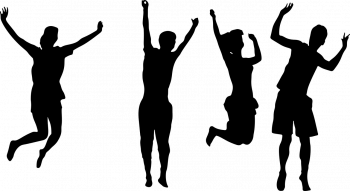Head, knee, toe Posted by Bjørn A. Bojesen on Feb 28, 2019 in Vocabulary
Without a physical body, learning Danish would be kind of hard. Not only do we use our tongue and lips to pronounce words – we also use our lunger (lungs) to breathe while we speak, our ears to listen, our hands to explain stuff… Let’s look at kroppen (the body).
There’s a nice children’s song about the body that you might already know in English. The Danish version goes: Hoved, skulder, knæ og tå, knæ og tå. Hoved, skulder, knæ og tå. Øje, øre, næse og mund. Hoved, skulder, knæ og tå. (Head, shoulder, knee and toe… Eye, ear, nose and mouth…)
As you can see, Danish words for kropsdele (body parts) are very similar to the English ones. Quite a number of body words have special plurals:
fod – fødder (foot – feet)
tå – tæer (toe/s)
hånd – hænder (hand/s)
tand – tænder (tooth – teeth)
øje – øjne (eye/s)
A few don’t even change in the plural: ben, knæ, lår, hår, næsebor, øjenbryn, øjenlåg (leg/s, knee/s, thigh/s, hair/s, nostrils, eyebrow/s, eyelid/s).
On the back side we’ve got a ryg (back) and a numse (butt). On the front side we’ve got a hals (neck), a mave (belly), a navle (navel) and a bryst (chest or breast – the plural bryster is used as in English). Of course there are also other bits, which I’m sure you can find in a dictionary…
On the sides of the body we’ve got arme (arms) with albuer, håndled, fingre og negle (elbows, wrists, fingers and nails). In ansigtet (the face) we’ve got kinder, hage, læber, tunge, pande (cheeks, chin, lips, tongue, forehead) – eventually a skæg (beard). And all over the body we’ve got hud [hooth] (skin).
Well, I hope reading this didn’t give you rynker i panden (”wrinkles in the forehead”) – or that you now har ondt i hovedet (have pain in the head = have a headache). Stay healthy and happy language learning! 🙂

Build vocabulary, practice pronunciation, and more with Transparent Language Online. Available anytime, anywhere, on any device.




